Notes for PdWeekend Local Planning
|
|
We need to prepare stuff in such a way that any mishap like a suitcase
lost at the airport won't prevent us from running the workshop. All
software (patches, external class code and executables) will be
available online before the Pd weekend so the stuff can be copied at
will. I'll keep you informed about uploads. Materials for the DIY mic
should be readily available so they can be acquired by CrashSpace with
minimal budget and effort, and the construction should not require
specialized tools and / or exclusive skills. I still have to figure
out what is the best model for our purpose. So far, I've built two
different models, see pictures below.
|
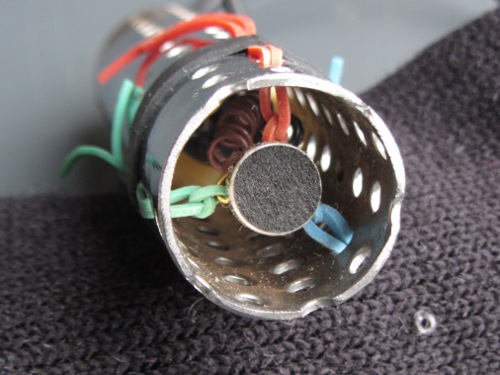
Interior of a model I'm now using in practice with good result. The
capsule position is recessed, for protection and also to warrant a
minimal distance from sound source and airflow. The steel tube makes a
rugged enclosure, and is connected with the mic's ground terminal to
acts as electro-magnetic shield.
|
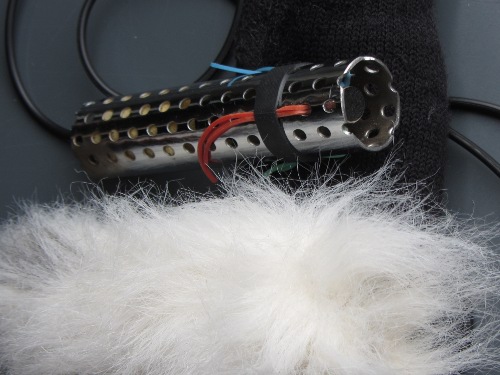
|
The mic housing is to be completely covered with imitation fur. The
fur takes care of popping vocals and handling noises. I fear that it
is unlikely to find steel tube with holes and all, like I bought it
years ago. A more elaborate alternative would be 1 inch copper tube
from the home depot, and drill a few holes in the upper end
ourselves. Or plastic tube with some metal shielding added.
|
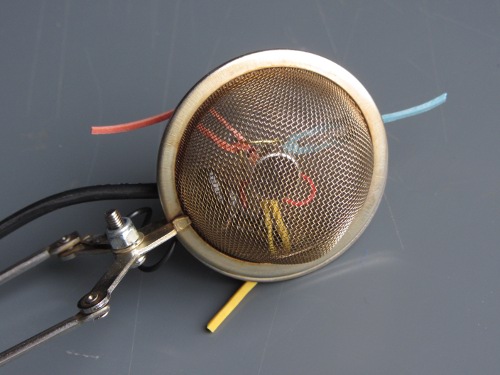
|
Tea strainer mic. I like this model because the simple tea strainer
provides so much functionality. It holds the capsule suspension and
provides a first barrier for wind noises. Connected to the capsule's
ground terminal, it provides electro-magnetic shielding.
|

|
Interior of the tea strainer mic. The original pin holding the two
sides of the tea strainer together was drilled out and replaced by a
nut and bolt. This was needed to attach a solder lip because steel can
not be soldered. This model needs an imitation fur wind cover just
like any other model. It does not reduce handling noise so well as the
steel tube model, but there may be ways to improve. Also, it is more
fragile than the steel tube model.
|
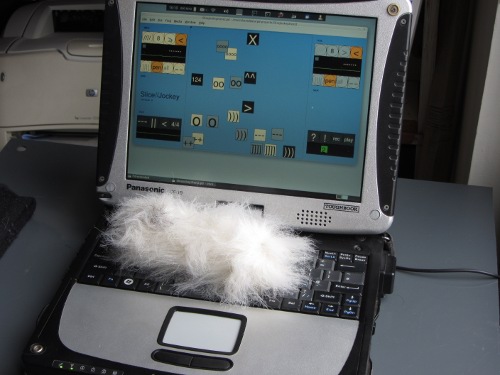
|
Complete live sampling set with the kitten mic ready to awake and catch a sound.
|
|
My suggestion would be to proceed preparing this workshop, even when
the Panasonic WM-55A103 capsule is not available and should be
replaced with an alternative capsule. Remember, the qualities of any
electret capsule can be greatly improved with decent housing, so it is
always useful to discuss this matter in the context of live sampling
(and field recording). I'll provide a detailed list of additional
materials and required tools soon as we decide on a definitive mic
enclosure model. Let me know if you have suggestions or comments.
|
|
From Katja, Sep 17 |
Today I did a copper tube mic. It works fine, and looks good (see image below). It's almost a pity they must be wrapped in a wind shield.
The tube I used was 22 mm outside, 20 mm inside diameter. In USA this is not exactly available but I found this on homedepot:
Home Depot Copper tube
Nominal size is 3/4 inch but the real size is slightly bigger (fortunately for us). Copper is not too hard to cut and drill, it does not need cooling fluids like steel does. It is a relatively expensive material, but for a mic we need only 11 cm, that means less than one dollar per mic if I've interpreted homedepot's info correctly.
|
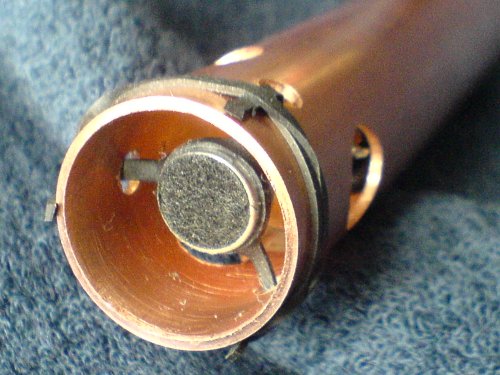
|
If we go for the copper tube mic (which would be my preference), the workshop would be a real _work_ shop because of all the hole drilling. Theron, do you think this is feasible within the context of CrashSpace? Amongst other things, we'd need drilling machines (possibly cordless), sharp drills in various sizes, and vices to hold the tubes.
|

Date: Wed, 18 Sep 2013 07:47:10
From: katja
Subject: Re: Panasonic capsules
More news on unidirectional electret capsules. I found this:
http://www.jlielectronics.com/PDF/JLI-55A103-65A103-56A103.pdf
Exactly the same specs as Panasonic's. There's also a slightly different
model with better bass response:
http://www.jlielectronics.com/PDF/JLI-55A-T.pdf
JLI's website looks like Chinese wholesale, though their address is in US,
and the domain registrant is also US based as I've checked. The mics come
from Transound which is definitely Chinese:
http://transound.gmc.globalmarket.com/
|






